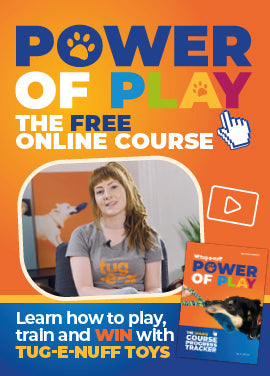Explained: The Four Ds of Dog Training
Hands up if you’re familiar with the sinking feeling of trying to teach your dog a specific new behaviour - and getting nowhere fast.
It’s definitely happened to us. In fact, we think it’s happened to every dog owner at some point - whether they are professional trainers or not.
But there are four simple rules that can help you work through even the stickiest of training situations positively.
They’re called the 4Ds of Dog Training.
- Distance
- Duration
- Distraction
- Difficulty

Don’t run before you can walk…
The theory of the Four Ds approach is that training needs to happen in baby steps, building on already established success each time. A dog needs to master the most basic version of a task, before a more complicated element can be added in.
Pro trainers agree that working through one D at a time - starting with distance and then duration, before moving on to duration and difficulty - is the key to success.
How it works in practice…
Distance
This is usually the distance between you and your dog - but it could refer to the distance between your dog and something else (their favourite Tug-E-Nuff toy, perhaps!?).
Your dog needs to be able to perform the trick or command within a close proximity to you as a very first step. With some treats or a tug toy handy as a reward, you can work on increasing the distance. Only when the command or trick can be successfully done from a range of distances should you think about adding in the next D.
Duration
Say you have mastered a ‘sit’ command from a variety of distances. Next you could work on the duration of the ‘stay’. It’s important to stress how important it is to start small and build up slowly. Staying put for just a couple of seconds is well worth a reward with a bond-boosting game of tug after you give your release cue.

Distraction
This is a big one for lots of us! It’s really common for dogs to be able to play really well or perform a trick perfectly in a distraction-free environment at home, but to seemingly lose all ability when there are distractions around.
When using Tug-E-Nuff training toys as the ultimate reward, we always recommend building value into the toy by playing with it (in short bursts, before putting it away) at home before using it out and about.
The same concept applies to dealing with distractions generally. Your dog needs to learn a new behaviour without any distractions, and then distractions can be slowly introduced.
Difficulty
As humans, we accept we can’t run until we can walk - so we shouldn’t expect our dogs to be able to do difficult training behaviours overnight. Increase the difficulty slowly - and, as a general rule, only after you’ve had success with Distance, Duration and Distraction.
Remember to always be mindful of your dog as an individual and follow their lead. No dog should be forced to do anything they don’t want to or are physically unable to do without discomfort.
The golden rules:
- Success breeds success. Help your dog master each ‘D’, starting at the easiest level and working your way up.
- Focus on one D at a time. When building up one D, lower your expectations for success with the others Ds at that time.
 Skip to content
Skip to content

